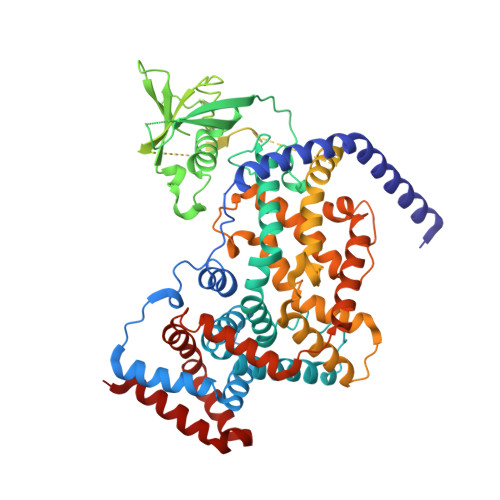Crystal structure of the plexin A3 intracellular region reveals an autoinhibited conformation through active site sequestration.
He, H., Yang, T., Terman, J.R., Zhang, X.(2009) Proc Natl Acad Sci U S A 106: 15610-15615
- PubMed: 19717441
- DOI: https://doi.org/10.1073/pnas.0906923106
- Primary Citation of Related Structures:
3IG3 - PubMed Abstract:
Plexin cell surface receptors bind to semaphorin ligands and transduce signals for regulating neuronal axon guidance. The intracellular region of plexins is essential for signaling and contains a R-Ras/M-Ras GTPase activating protein (GAP) domain that is divided into two segments by a Rho GTPase-binding domain (RBD). The regulation mechanisms for plexin remain elusive, although it is known that activation requires both binding of semaphorin to the extracellular region and a Rho-family GTPase (Rac1 or Rnd1) to the RBD. Here we report the crystal structure of the plexin A3 intracellular region. The structure shows that the N- and C-terminal portions of the GAP homologous regions together form a GAP domain with an overall fold similar to other Ras GAPs. However, the plexin GAP domain adopts a closed conformation and cannot accommodate R-Ras/M-Ras in its substrate-binding site, providing a structural basis for the autoinhibited state of plexins. A comparison with the plexin B1 RBD/Rnd1 complex structure suggests that Rnd1 binding alone does not induce a conformational change in plexin, explaining the requirement of both semaphorin and a Rho GTPase for activation. The structure also identifies an N-terminal segment that is important for regulation. Both the N-terminal segment and the RBD make extensive interactions with the GAP domain, suggesting the presence of an allosteric network connecting these three domains that integrates semaphorin and Rho GTPase signals to activate the GAP. The importance of these interactions in plexin signaling is shown by both cell-based and in vivo axon guidance assays.
Organizational Affiliation:
Department of Pharmacology, University of Texas Southwestern Medical Center, Dallas, TX 75390-9041, USA.















